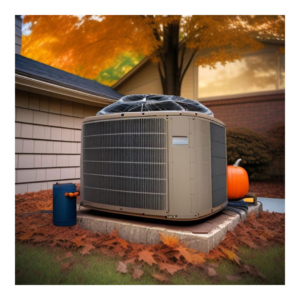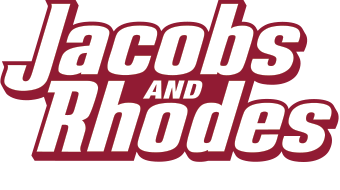Fall HVAC Maintenance Checklist: Prepare Your System for Winter
 As the leaves begin to change and a crispness fills the air, there’s no denying that fall is upon us. While many eagerly anticipate the pumpkin-spiced lattes and cozy sweater weather, there’s another aspect of fall that often goes unnoticed but is just as crucial – fall HVAC maintenance.
As the leaves begin to change and a crispness fills the air, there’s no denying that fall is upon us. While many eagerly anticipate the pumpkin-spiced lattes and cozy sweater weather, there’s another aspect of fall that often goes unnoticed but is just as crucial – fall HVAC maintenance.
The impending winter season can be a formidable adversary for HVAC systems. The bitter cold temperatures and increased demand for heat place a heavy burden on these essential home appliances. Yet, all too often, homeowners neglect their HVAC systems until they’re left shivering in the dead of winter or sweltering during the dog days of summer. It’s time to change that narrative.
Let’s dive into the critical importance of fall HVAC maintenance and explore why it should be a top priority on your seasonal to-do list. Beyond ensuring your comfort, regular maintenance can lead to a range of benefits, including improved efficiency, lower energy bills, and extended system lifespan. So, let’s get started on this journey to safeguard your home’s comfort and your wallet’s well-being, one well-timed maintenance check at a time.
Why Fall Maintenance Matters
With its mild temperatures and the absence of extreme weather conditions, the potential of preventing winter breakdowns, detecting early problems and identifying potential cost savings, fall is the ideal season to tackle HVAC maintenance head-on.
- Moderate Weather Conditions: During the fall, temperatures are typically milder compared to the scorching heat of summer or the bone-chilling cold of winter. This makes it the perfect time to inspect and service your HVAC system. Technicians can work comfortably without being rushed due to extreme weather, ensuring a thorough job.
- Preventing Winter Breakdowns: One of the primary reasons for scheduling HVAC maintenance in the fall is to avoid winter breakdowns. Imagine the frustration of waking up to a freezing house on a bitter winter morning, only to discover that your heating system has failed. Preventive maintenance in the fall helps identify and address potential issues before they escalate into major breakdowns, ensuring your system is ready to combat the winter chill.
- Early Problem Detection: Regular fall HVAC maintenance involves a comprehensive inspection of your system. During this process, technicians can spot and address minor issues that may not be immediately noticeable. By fixing these problems early, you not only prevent costly repairs down the road but also ensure that your system operates at peak efficiency throughout the winter.
- Cost Savings: Detecting and resolving issues in the fall can lead to significant cost savings. Minor problems, when left unattended, can snowball into major malfunctions that require extensive repairs or even system replacement. By nipping these issues in the bud, you not only save on repair expenses but also reduce energy wastage, leading to lower energy bills throughout the winter months.
In essence, scheduling HVAC maintenance in the fall is a proactive step toward ensuring the reliability and efficiency of your system during the demanding winter season. It’s an investment that pays off not only in terms of comfort and peace of mind but also in potential cost savings.
So, don’t wait until the first frost to think about your HVAC system—act now, and you’ll thank yourself when winter arrives.
The Fall HVAC Maintenance Checklist
Fall HVAC maintenance is essential to ensure your heating system functions efficiently throughout the winter.
Here’s a detailed checklist, explaining each item’s importance and how to perform it:
Thermostat Inspection and Calibration
The thermostat controls your HVAC system’s operation. Ensuring it’s accurate and calibrated correctly is crucial for maintaining a comfortable indoor temperature.
How to Perform: Check if the thermostat displays the correct temperature. If not, consult your thermostat’s manual for calibration instructions or consider professional help.
Air Filter Replacement
A clean filter promotes proper airflow and system efficiency, reducing energy consumption and improving air quality.
How to Perform: Locate your filter and replace it if it’s dirty or clogged. Most filters need replacement every 1-3 months, but refer to your system’s manual for specifics.’
Ductwork Inspection
Leaky or damaged ducts can lead to heat loss and energy wastage.
How to Perform: Visually inspect your ductwork for cracks, gaps, or disconnected sections. Seal any leaks with duct tape or mastic sealant, and consider professional duct cleaning if needed.
Clean Vents and Registers
Dust and debris accumulation in vents and registers hinder airflow, reducing system efficiency.
How to Perform: Remove vent covers and registers, clean them thoroughly, and vacuum the duct openings. Ensure unobstructed airflow.
Check for Drafts and Insulation
Proper insulation and sealing prevent heat loss, reducing energy consumption and maintaining consistent indoor temperatures.
How to Perform: Inspect windows, doors, and any gaps or cracks in walls and ceilings. Seal gaps with weatherstripping, caulk, or insulation to prevent drafts.
Inspect the Furnace or Heat Pump
The heart of your heating system, regular inspection ensures safe and efficient operation.
How to Perform: Examine the furnace or heat pump for visible damage, such as rust or corrosion. Listen for unusual noises. If you notice issues, consult a professional technician for repairs.
Lubricate Moving Parts
Proper lubrication reduces friction and extends the life of your system’s components.
How to Perform: Refer to your system’s manual to identify parts that require lubrication, such as bearings or fan motors. Use the manufacturer-recommended lubricant sparingly.
Test the Safety Systems
Safety systems, like carbon monoxide detectors and pressure switches, protect your home and family.
How to Perform: Test carbon monoxide detectors, ensure they have fresh batteries, and inspect safety switches and sensors. Consult your system’s manual for specific testing procedures.
Inspect the Condensate Drain
A clogged condensate drain can lead to water damage and affect system operation.
How to Perform: Locate the drain line and check for clogs or obstructions. Use a mixture of water and vinegar to flush the drain if necessary.
DIY vs. Professional Maintenance
Benefits of Professional HVAC Maintenance
- Expertise and Experience: HVAC technicians at companies like Jacobs and Rhodes are highly trained and experienced. They possess in-depth knowledge of various HVAC systems, allowing them to identify and resolve issues efficiently. Their expertise extends to both routine maintenance and complex repairs, ensuring your system operates at its best.
- Comprehensive Inspections: Professional HVAC maintenance involves a comprehensive examination of your system, not just a quick once-over. Technicians inspect all components, from the thermostat to the condensate drain, ensuring that every part is in working order. This thorough approach helps catch potential problems early, saving you from costly breakdowns down the line.
- Safety Assurance: Safety is paramount when dealing with HVAC systems. These systems involve electrical components, combustible fuels, and potentially harmful refrigerants. Attempting DIY repairs without the proper knowledge and tools can pose serious risks. Professional HVAC technicians are well-versed in safety protocols, minimizing hazards during maintenance and repairs.
- Energy Efficiency: One of the primary goals of HVAC maintenance is to improve energy efficiency. Professional technicians can fine-tune your system for optimal performance, reducing energy consumption and ultimately lowering your utility bills. This translates into long-term cost savings.
The Importance of Safety
HVAC systems can be deceptively complex, and any misstep can result in safety hazards. Here are a few safety concerns when dealing with HVAC systems:
- Electrical Hazards: Working with electrical components without proper training can lead to electrical shocks or fires.
- Gas Leaks: For systems using natural gas or propane, a small mistake during maintenance can lead to gas leaks, which are not only dangerous but also pose a risk of explosion.
- Refrigerant Handling: HVAC systems contain refrigerants that can be harmful if mishandled. Professionals are trained in safe refrigerant handling and disposal.
- Carbon Monoxide: A malfunctioning furnace can produce carbon monoxide, a colorless, odorless gas that is deadly when inhaled. Professionals ensure your system operates safely.
Conclusion
During this transitional period, investing some time and effort into ensuring the optimal performance of your Heating, Ventilation, and Air Conditioning (HVAC) system can prove invaluable as winter’s icy grasp approaches.
Our provided checklist serves as a comprehensive guide to fall HVAC maintenance, elucidating the importance of each task and providing step-by-step instructions. From verifying thermostat accuracy to guaranteeing a clear condensate drain, every action is pivotal in sustaining the seamless operation of your HVAC system throughout the winter season.
While we applaud DIY maintenance endeavors, we strongly emphasize the significance of considering professional HVAC services, such as those offered by Jacobs and Rhodes.
Our proficient experts bring a wealth of knowledge, experience, and safety protocols to the forefront, ensuring that your HVAC system not only functions effectively but also prioritizes safety. Their ability to identify and rectify issues in their early stages can spare you from costly breakdowns and energy inefficiencies in the future.
Fall HVAC maintenance transcends the realm of seasonal chores; it represents a proactive endeavor to safeguard your home’s comfort, your family’s safety, and your financial well-being.

 Jacobs and Rhodes
Jacobs and Rhodes Jacobs and Rhodes
Jacobs and Rhodes